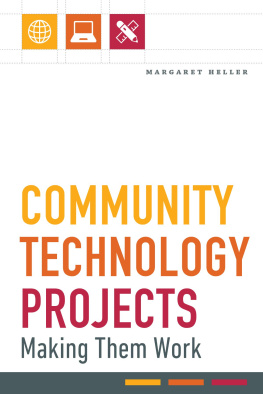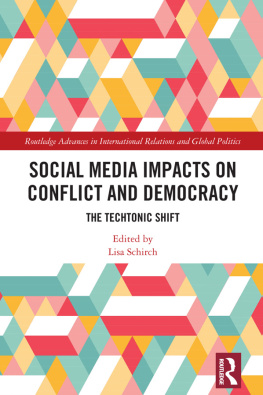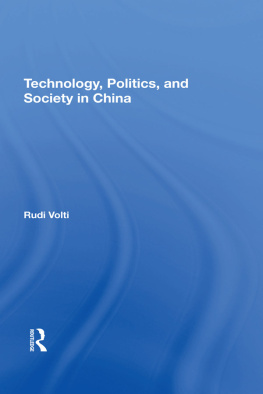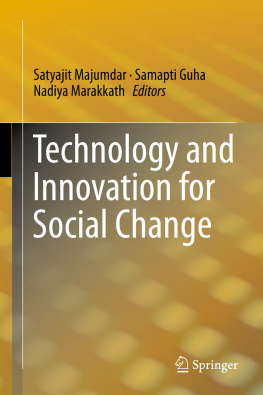About the Author
The product of French, British, and American schools, the author majored in English (Phi Beta Kappa) at New York University before focusing on Third World problems at the graduate level, also at New York University.
Before joining academe where he is now a professor of government and politics at Manhattan College, Dr. Heller held a position with the British Council (on Education) in Cairo, Egypt, and as an associate textbook editor with the Pitman Publishing Corporation in New York City. He has taught a Technology and Society course for many years and has written an earlier book and several articles in that field.
Case No. 1
Community Cannery and Poultry Breeding, Turkey
by
Alvin G. Edgell,
The Peace Corps/CARE
This case indicates that technology often consists of a mix of hardware (jars, lids, pressure cookers in the case of the cannery; chicks, feed, and medication in the case of poultry breeding) and software (know-how, marketing, management, imagination, initiative). But most importantly, the human environment must be receptive for such technology to be successfully transferred and implanted.
A Community Cannery in Karakoy
This northwestern Anatolian village area (in Bilecik Province, Turkey) used to produce a surplus of vegetables and fruits, and their prices were discouragingly low at harvest periods. Nor did this seasonal surplus do anything for the unbalanced village nutrition during other times of the year.
Peace Corps Volunteer Eric Hutchinson noted these conditions and found ready discussions on the subject to be possible, both in the village and among the provincial officials. The village women were generally familiar with the notion of canning since the provincial home economist had given a course on the subject there previously. Explorations with both villagers and officials were intensive and extended over some time, for the evolving idea of a community cannery was complicated and unprecedented in Turkey. Eric arrived in Karakoy in late October 1964 and the canning plant went into full operation in the late summer of 1965.
The provincial assistant director of agriculture took a dedicated interest in seeing the project through. The governor himself gave keen support, and, in fact, found some funds in the provincial budget for construction. The home economist eagerly plunged in and, among other things, supplied the critical training in the more elaborate processes planned, with special attention given to the village woman who would be the continuing operations supervisor. The adult education director for the province was also supportive and helped in marginal ways. The village itself put up a sizable share of the construction costs for the simple, efficiently designed structure.
A key man in all this planning was Turkeys then-forgotten top expert on small community canneries, Professor Kemal Gokce. Eric had hunted him down in his mad inventors lab in the agricultural faculty of the University of Ankara. The Karakoy project promised to enable Gokce to implement his carefully worked-out ideasand his cause. It was Gokce who took charge of the technical designing, including the building, subtly adapted to the immediate circumstances.
There were plenty of uncertain moments along the way, including those invariably attending the funding of such projects. It was clear very soon that equipment would be a major problem. Appropriate jars and lids were not then being produced in Turkey, although a manufacturer in Istanbul had been indicating his intent to produce them for some time. CARE had been supplying American jars and lids for use in just such simple courses as had been previously given in Karakoy on the assumption that a Turkish source would soon be available and that it would be nudged along by demand generated by the courses. Appropriate pressure cookers were also not made in Turkey although smaller ones were, and the capability supposedly existed. In any case, CARE would also import cookers of proper capacity.
Although the immediate goals of the project were the optimum use of the locally grown vegetables and fruits, another important purpose underlay this project, largely conceived by Dr. Gokce and heartily encouraged by CARE. It was to be a model for widespread emulation and demonstration to potential manufacturers of essential equipment so that they might be encouraged to produce it.
The cannery project came off and it had ramifying effects in both the village and outside. Starting with Erics house to house canvassing, village interest gradually grew into excitement. Almost all the village women were eager, and the men became proudly involved in many elements of the planning, location, and provision of land for the structure, raising construction funds, etc. An apparent side effect was the rushing to completion of quite an impressive village park-garden neighboring the cannery. An element of continuing organization, unusual for villagers, was necessarily introduced for the operation of the cannery. Among other things, the CARE jars were to be rationed, rented, and returned to the canneryall duly recorded by the trained local woman in charge. The whole nature of the project tended to add importance and prestige to the role of the village women.
But it was outside the village that the project promised to have the greatest effect, on a potentially national scale. For one thing, jar and lid manufacturers seemed to have been prompted into actual production. The success and lessons at Karakoy persuaded CARE to give priority attention to supporting similar community canneries elsewhere, in large part to convince potential local equipment suppliersincluding the until recently less responsive pressure-cooker makersthat a market existed for appropriately adapted wares. The vision of a proliferation of community canneries with their nutritional and potential economic advantages, supplied entirely with Turkish-made equipment, now seemed tantalizingly near fulfillment. Officials in Bilecik Province were so impressed that they budgeted substantial funds towards construction of three similar community canneries in 1966.
Primarily because of this enthusiastic response in Bilecik. a Peace Corps girl with home economist skills, Ginny Lange, was assigned to work out of that provincial center, giving priority attention to the three canneries established replicating Karakoys. She was able to put pressure on equipment manufacturers by experimenting with their pilot production and giving them feedback on needed improvements. After a typically disappointing 21 months in a regular village role, Ginny found her new activity much more satisfying and clearly useful.
What Eric seemed to contribute most importantly was a keen, probing imagination; dedicated, dogged follow-up on the leads it gave him; and then unflagging attention to all the coordination and communication effort that had to be kept movingprimarily among the village. CARE, and Bilecik Provinces government officialsthrough long and sometimes anxious periods before the grand, festive day of the cannerys formal dedication by provincial and Ankara officials.
Poultry Breeding in Karapinar
Karapinar in south central Anatolia was the scene of a successful experiment involving an ostensibly limited resource. poultry. Peace Corps Volunteers Marvin Eash and Mike Basile were assigned to the village of Islik. After a while Marvin decided to become active in a field where he had had some experience because his father had been a large commercial poultry breeder. One villager was genuinely interested in trying out modern methods with the hope of realizing some profits. But he could not or would not put up all the risk capital. So a CARE plan was drafted to cover the cost of 200 chicks, special feed, and medication required to start the project. An interested Turkish official became involved at an early stage and every step was worked out with his assistance. After a reasonable time allowed to enable the brood to start turning a profit, the farmer was to repay his seed money to CARE so that another farmer might be advanced funds for a similar poultry project on a revolving basis.







